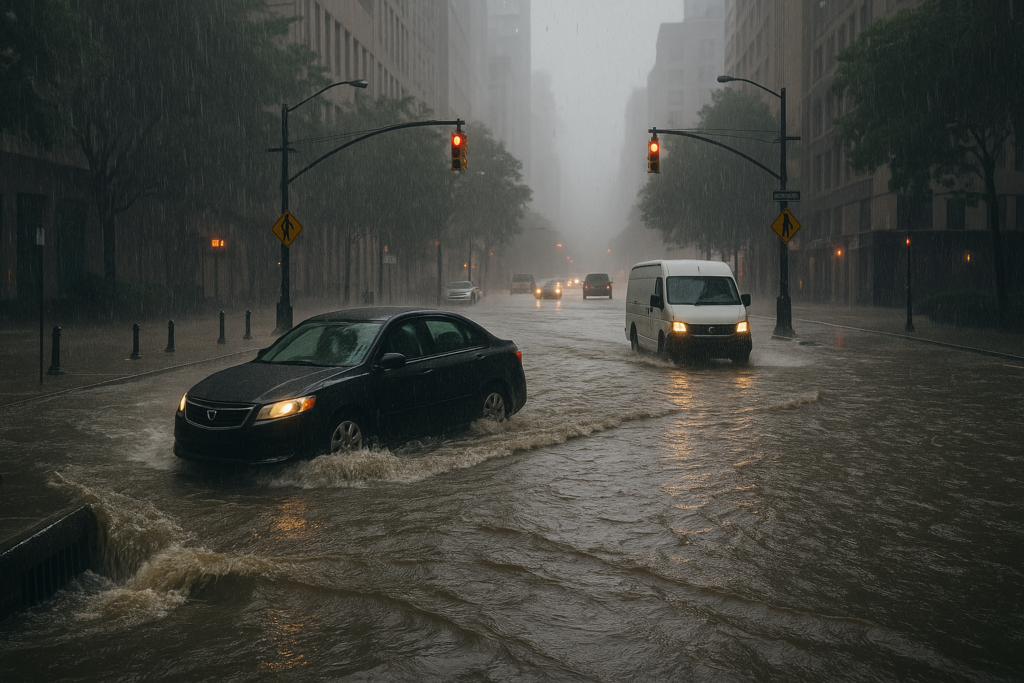Ever wondered why cities are seeing more intense rainfall and flash floods lately? The answer lies in a simple but powerful fact: hotter air holds more moisture. And when all that water vapor finally comes down – it pours.
The Science Made Simple
Warm air can hold more water vapor than cold air. That’s basic physics – specifically, the Clausius-Clapeyron relation, which says that for every 1°C increase in temperature, the air’s capacity to hold water increases by about 7%.
So, as global temperatures rise due to climate change, the atmosphere loads up on more water vapor. Eventually, that moisture has to come down: often suddenly, and all at once. That’s why we’re seeing more erratic and intense rainfall events, even if the total annual rainfall doesn’t always increase.
Why That’s a Big Problem in Cities
In urban areas, most surfaces are covered in concrete and asphalt. These impermeable surfaces don’t absorb water, so all that sudden rain has nowhere to go. And when city drainage systems – many of which were designed decades ago – can’t handle the deluge, it leads to:
- Drainage overload
- Flash floods
- Road collapses and waterlogging
- Disruption of transport, power, and emergency services
Let’s look at a few recent events that show this dynamic in action:
- Mumbai, India (July 2024): The city received 300 mm of rain in just 6 hours, paralyzing traffic and flooding homes. Experts linked the event to warmer Arabian Sea temperatures fueling moisture-heavy clouds.
- New York City, USA (September 2023): A sudden cloudburst dropped nearly 6 inches of rain in less than 12 hours, swamping subways and roads—despite the city’s improved drainage systems.
- Beijing, China (July 2023): Torrential rain triggered severe flooding, with rainfall levels not seen in over 140 years, causing major damage to infrastructure and displacement of thousands.
What Can Be Done?
Cities need to adapt. That means:
- Upgrading drainage systems
- Creating more green spaces to absorb rain
- Investing in real-time flood monitoring and alerts
- Planning urban development with climate resilience in mind
Final Thoughts
Hotter air doesn’t just make summers unbearable: it supercharges storms. As climate change continues, urban flooding will become more frequent and severe unless cities act fast. Understanding the link between heat, moisture, and rainfall is the first step toward building smarter, safer cities.
Want to learn more about climate impacts and urban adaptation? Follow us for insights backed by science and real-world examples. Here is another article we wrote: 101 Climate Change Impacts You Should Know.


